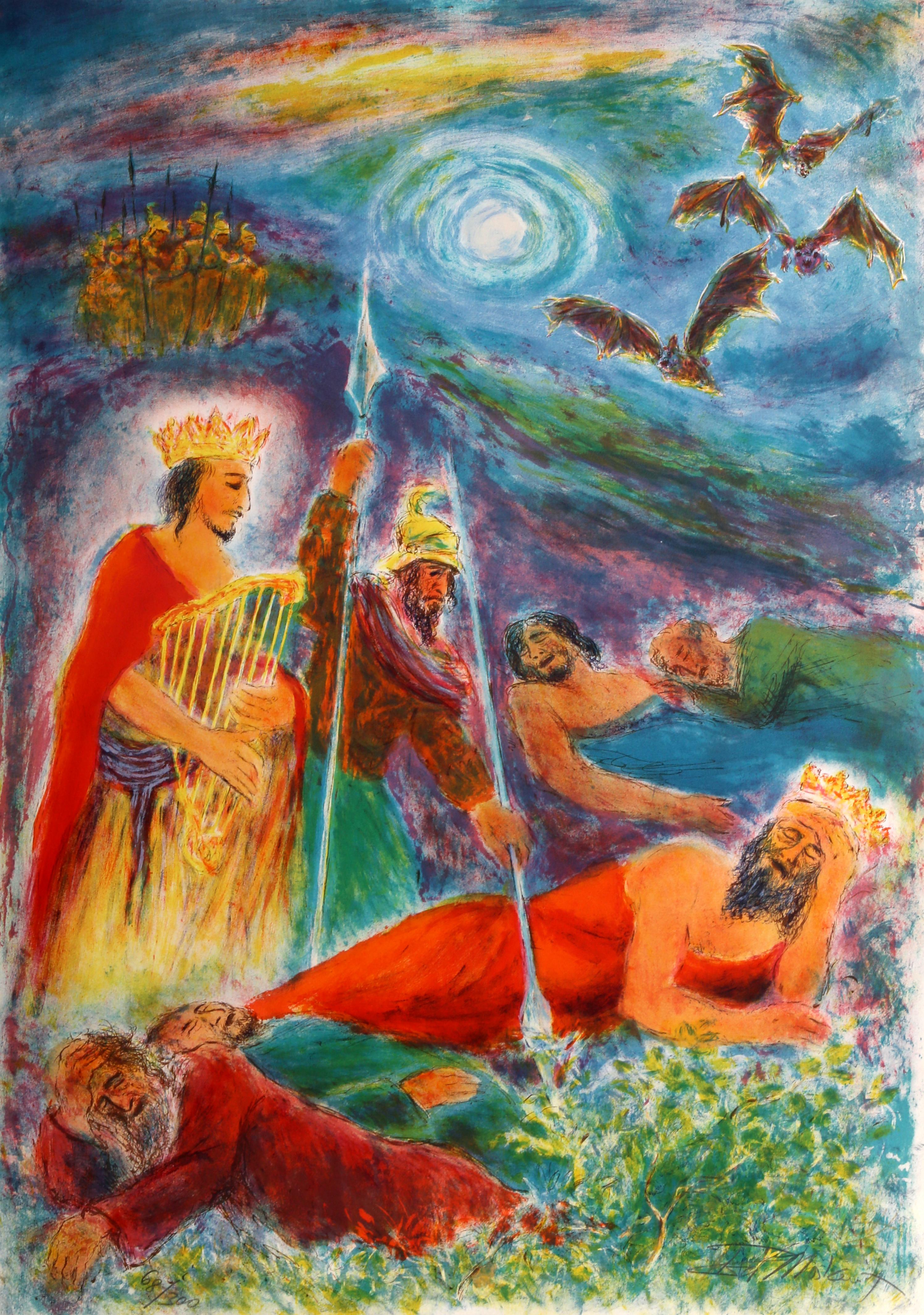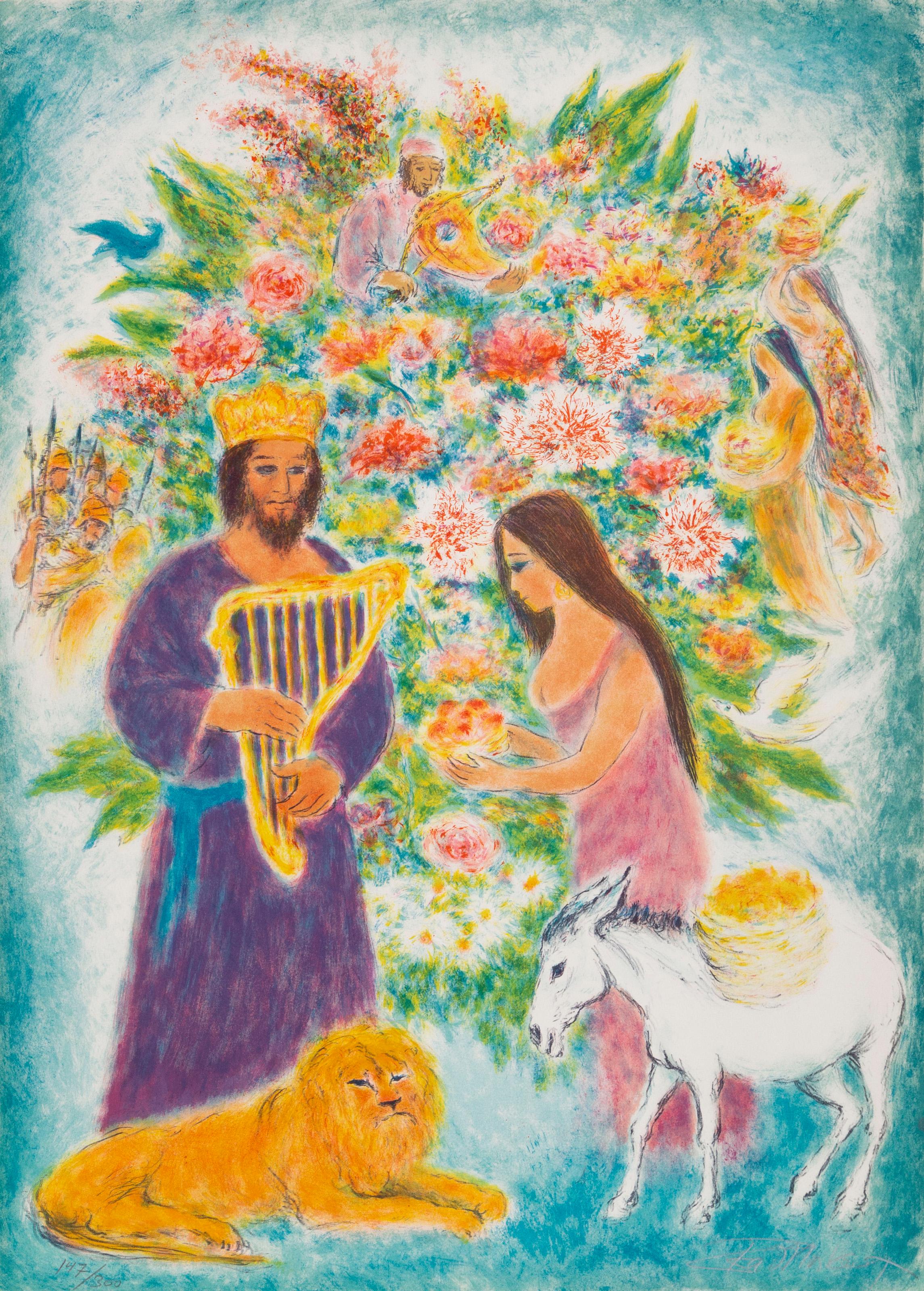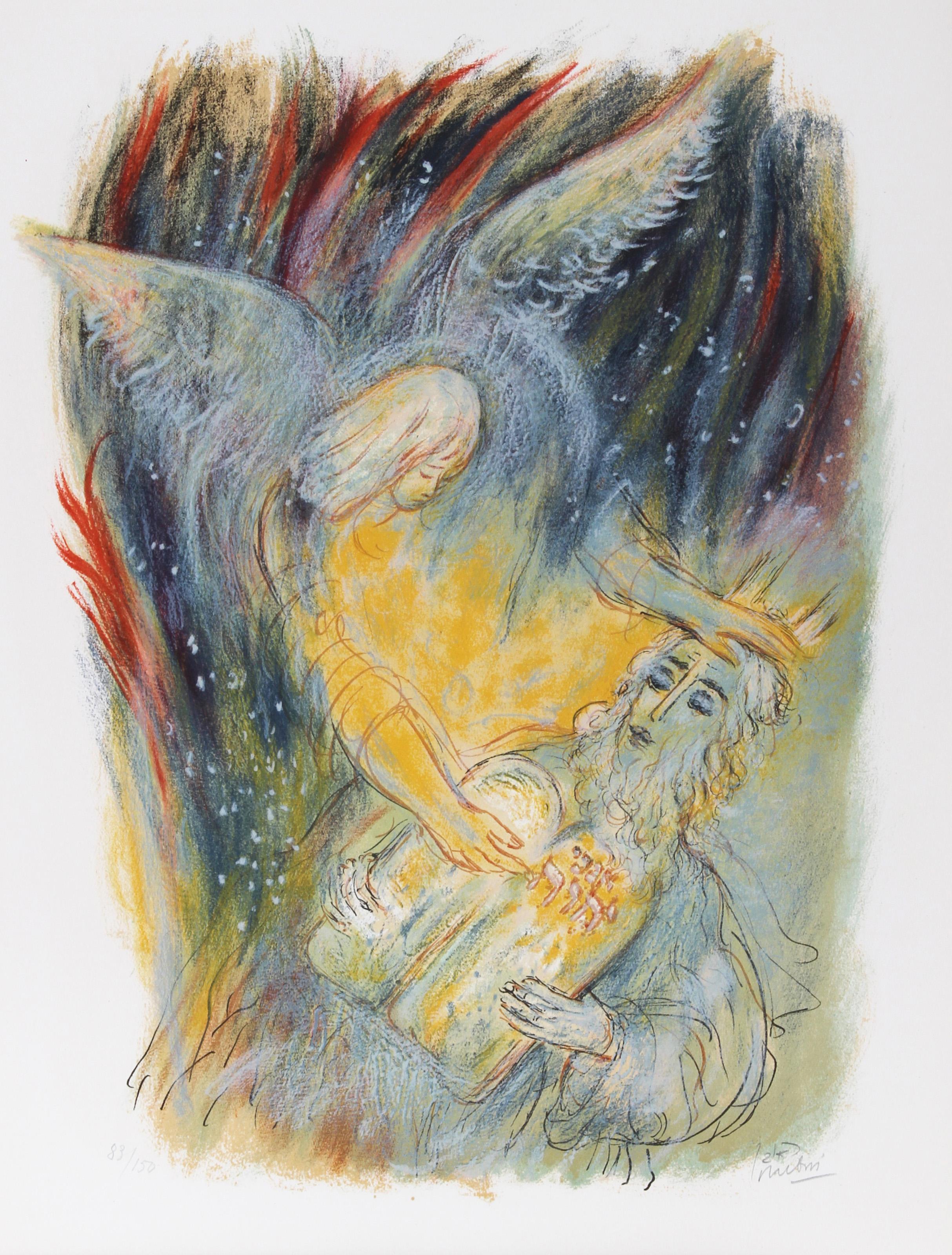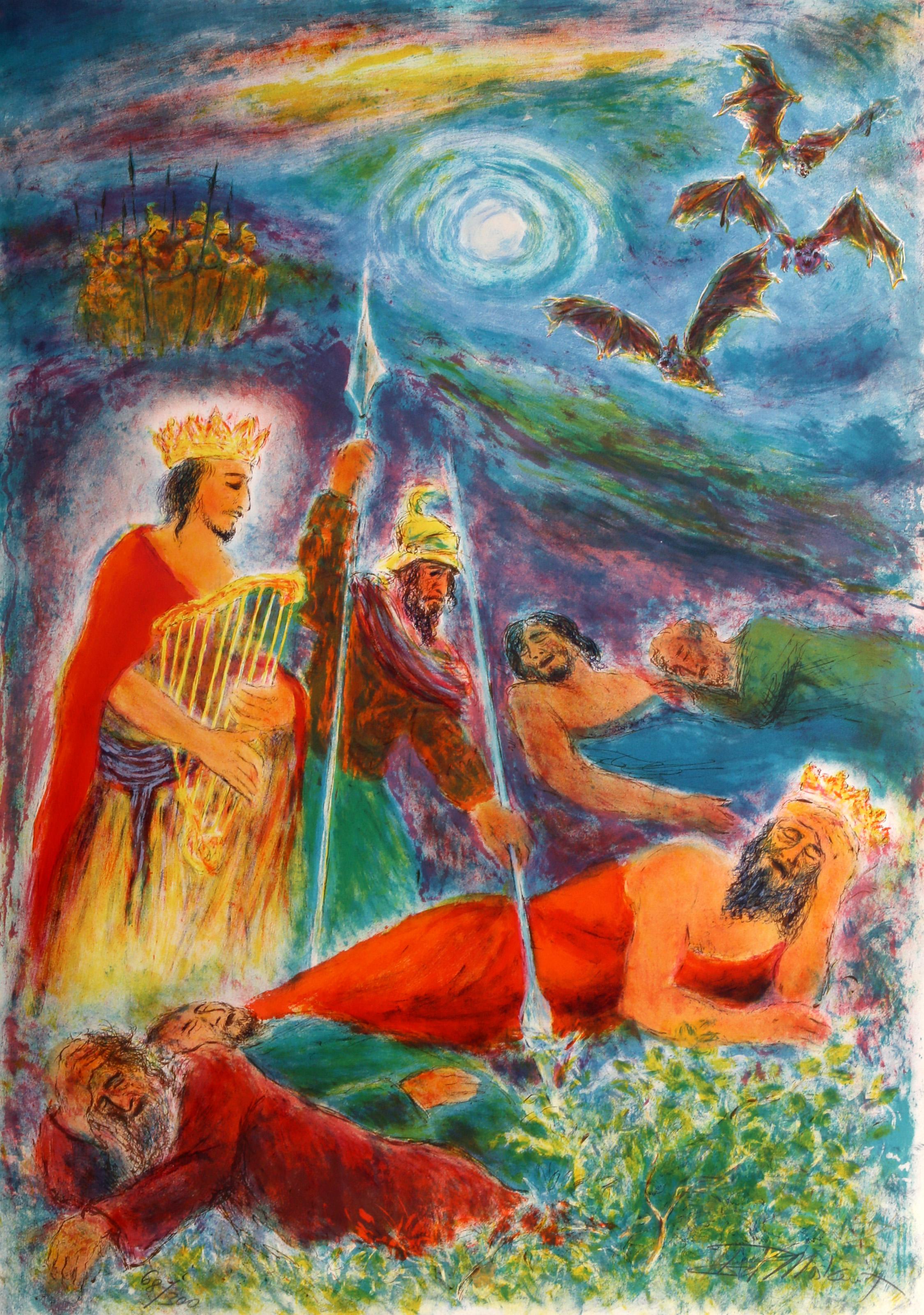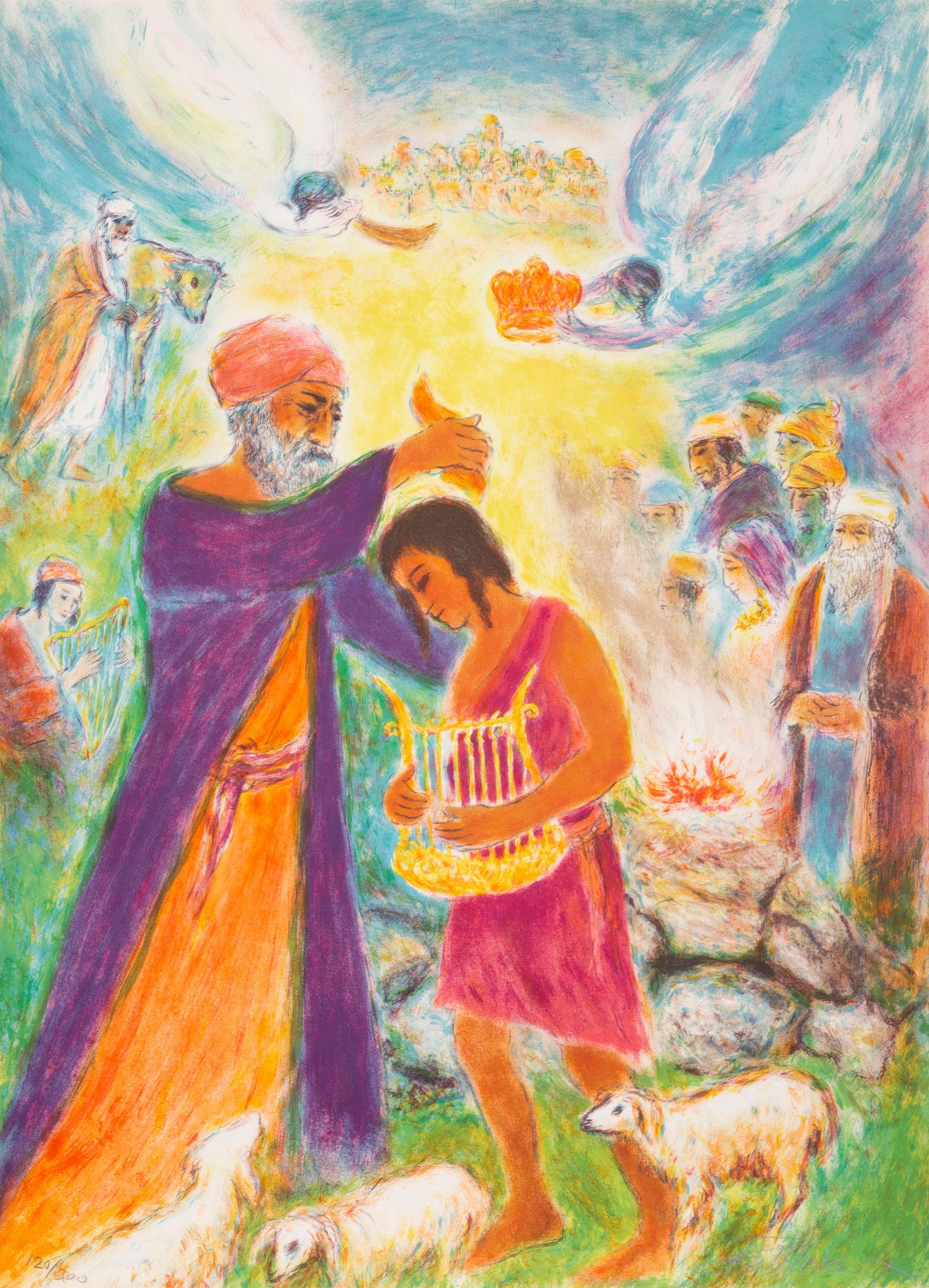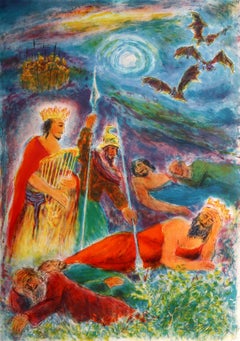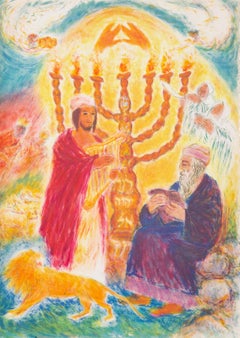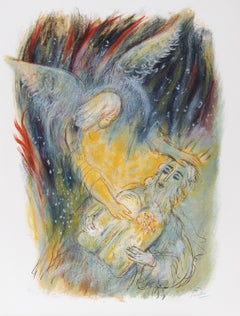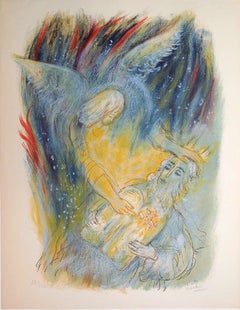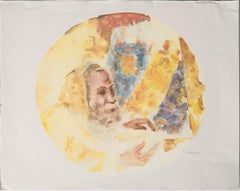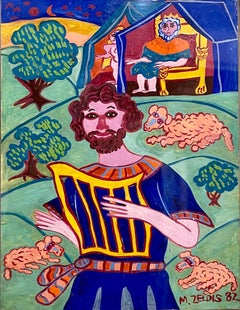Items Similar to King Solomon, Folk Art Lithograph by Ira Moskowitz
Want more images or videos?
Request additional images or videos from the seller
1 of 5
Ira MoskowitzKing Solomon, Folk Art Lithograph by Ira Moskowitz1972
1972
$350
£266.38
€305.08
CA$497.82
A$545.54
CHF 284.89
MX$6,555.88
NOK 3,561.64
SEK 3,359.19
DKK 2,277.05
About the Item
Ira Moskowitz, Polish/American (1912 - 2001) - King Solomon, Portfolio: Song of Songs, Year: 1972, Medium: Lithograph, signed and numbered in pencil, Edition: 300, Size: 30 x 21 in. (76.2 x 53.34 cm)
- Creator:Ira Moskowitz (1912, American)
- Creation Year:1972
- Dimensions:Height: 30 in (76.2 cm)Width: 21 in (53.34 cm)
- Medium:
- Movement & Style:
- Period:
- Framing:Framing Options Available
- Condition:
- Gallery Location:Long Island City, NY
- Reference Number:Seller: 753581stDibs: LU46615033712
About the Seller
4.9
Platinum Seller
Premium sellers with a 4.7+ rating and 24-hour response times
Established in 1979
1stDibs seller since 2014
3,117 sales on 1stDibs
Typical response time: 1 hour
- ShippingRetrieving quote...Shipping from: Long Island City, NY
- Return Policy
Authenticity Guarantee
In the unlikely event there’s an issue with an item’s authenticity, contact us within 1 year for a full refund. DetailsMoney-Back Guarantee
If your item is not as described, is damaged in transit, or does not arrive, contact us within 7 days for a full refund. Details24-Hour Cancellation
You have a 24-hour grace period in which to reconsider your purchase, with no questions asked.Vetted Professional Sellers
Our world-class sellers must adhere to strict standards for service and quality, maintaining the integrity of our listings.Price-Match Guarantee
If you find that a seller listed the same item for a lower price elsewhere, we’ll match it.Trusted Global Delivery
Our best-in-class carrier network provides specialized shipping options worldwide, including custom delivery.More From This Seller
View AllPsalm of Psalms, Folk Art Lithograph by Ira Moskowitz
By Ira Moskowitz
Located in Long Island City, NY
Ira Moskowitz, Polish/American (1912 - 2001) - Psalm of Psalms, Year: circa 1980, Medium: Lithograph, signed and numbered in pencil, Edition: 68/300, Image Size: 29.75 x 21.25 inch...
Category
1980s Folk Art Figurative Prints
Materials
Lithograph
Menorah, Folk Art Lithograph by Ira Moskowitz
By Ira Moskowitz
Located in Long Island City, NY
Ira Moskowitz, Polish/American (1912 - 2001) - Menorah, Portfolio: Song of Songs, Year: 1972, Medium: Lithograph, signed and numbered in pencil, Edition: 100, Size: 30 x 21 in. (76...
Category
1970s Folk Art Figurative Prints
Materials
Lithograph
David and Bathsheba, Folk Art Lithograph by Ira Moskowitz
By Ira Moskowitz
Located in Long Island City, NY
Ira Moskowitz, Polish/American (1912 - 2001) - David and Bathsheba, Portfolio: Song of Songs, Year: 1972, Medium: Lithograph, signed and numbered in pencil, Edition: 300, Size: 30 ...
Category
1970s Folk Art Figurative Prints
Materials
Lithograph
VII from Visions of the Bible, Modern Lithograph by Reuven Rubin
By Reuven Rubin
Located in Long Island City, NY
Reuven Rubin, Israeli (1893 - 1974) - VII from Visions of the Bible, Year: 1972, Medium: Lithograph, signed and numbered in pencil, Edition: 83/150, Image Size: 25 x 18 inches, S...
Category
1970s Modern Figurative Prints
Materials
Lithograph
Music to Heaven, Modern Lithograph by Ira Moskowitz
By Ira Moskowitz
Located in Long Island City, NY
Ira Moskowitz, Polish/American (1912 - 2001) - Music to Heaven, Year: 1972, Medium: Lithograph, signed and numbered in pencil, Edition: 300, Size: 29.5 x 21 in. (74.93 x 53.34 cm...
Category
1970s Modern Figurative Prints
Materials
Lithograph
Blessings, Modern Lithograph by Ira Moskowitz
By Ira Moskowitz
Located in Long Island City, NY
Ira Moskowitz, Polish/American (1912 - 2001) - Blessings, Year: 1972, Medium: Lithograph, signed and numbered in pencil, Edition: 300, Size: 29.5 x 21 in. (74.93 x 53.34 cm), Des...
Category
1970s Modern Figurative Prints
Materials
Lithograph
You May Also Like
Israeli Naive Folk Art Silkscreen Lithograph David Sharir - Bet Hamikdash Scene
By David Sharir
Located in Surfside, FL
David Sharir was born in 1938 in Tel Aviv, Israel and currently resides there.
David Sharir, the son of Russian immigrants, was born in Israel. Beginning his study of art in Tel Aviv...
Category
20th Century Folk Art Figurative Prints
Materials
Screen
Large Israeli Lithograph Moses with the Ten Commandments Reuven Rubin Mourlot
By Reuven Rubin
Located in Surfside, FL
Lithograph printed by Mourlot, Paris on Arches France paper. limited edition of 150. Pencil signed.
Biblical themed Lithograph by Israeli Master.
Reuven Rubin 1893 -1974 was a Roman...
Category
1970s Figurative Prints
Materials
Archival Paper, Lithograph
"The Rabbi and the Torah" unframed lithograph hand-signed by artist Chaim Gross
By Chaim Gross
Located in Boca Raton, FL
"The Rabbi and the Torah" unframed lithograph on fine art paper by artist Chaim Gross from a limited edition of 250. Hand signed Chaim Gross and hand numbered 63/250. Image size: 21...
Category
20th Century Modern Portrait Prints
Materials
Lithograph
Malcah Zeldis Folk Art Gouache Painting King David Self Taught Outsider Artist
Located in Surfside, FL
MALCAH ZELDIS (American-Israeli, b. 1931),
''David and Saul'', 1982,
Gouache on paper
Hand signed and dated lower right, titled in pencil on paper verso.
Provenance: Estate of Laura Fisher...
Category
1980s Folk Art Figurative Paintings
Materials
Paper, Gouache
Israeli Folk Art Hebrew Naive Judaica Lithograph Jewish Holiday Shavuot
By Shalom Moskovitz
Located in Surfside, FL
Vintage pencil signed and numbered limited edition lithograph on deckle edged Arches paper.
Shalom of Sefad (Shulem der Zeigermacher in Yiddish Shalom Moskowitz) Shalom of Tzfat lived for over seventeen years in his native town of Safed in the hills of the Galilee. There he worked as a watchmaker, stonemason and silversmith, during the 50's. Since then this self-taught artist has achieved an international reputation. Shalom is a naive painter, but not a rustic one, he expresses a very elaborate way of thinking in his own way. While belonging to Hasidism, Shalom of Safed uses his artistic talents positively. 'I don't paint', he explains, 'to tell the story of the Bible in color and lines. His works have been exhibited in prominent museums and galleries in Europe and the United States, and are included in the collections of the Museums of Modern Art in Paris and New York, the Israel Museum in Jerusalem, the Stedelijk Museum in Amsterdam, the Modern Museum in Stockholm and the Jewish Museum in New York
He has exhibited alongside all of the Israeli great artists. Israel has had a Vibrant Folk Art, Naive art scene for a long time now artists like Yisrael Paldi, Nahum Guttman, Reuven Rubin and even Yefim Ladizhinsky had naive periods. The most well know if the strict naive artists are Shalom of Safed, Irene Awret...
Category
20th Century Folk Art Figurative Prints
Materials
Lithograph
Large Israeli Bible Lithograph, King David by Reuven Rubin Hand Signed
By Reuven Rubin
Located in Surfside, FL
Lithograph printed by Mourlot, Paris on Arches France paper. limited edition of 150. Pencil signed.
Biblical themed Lithograph by Israeli Master.
Reuven Rubin 1893 -1974 was a Roman...
Category
1970s Prints and Multiples
Materials
Archival Paper, Lithograph
More Ways To Browse
David Hockney Munich
David Hockney Signed Poster
Divan Hafez
Double Elvis
Durer Original
Dylan Glaser
Etching On Silk Print
Fake Street Art
Flog Art
Frank Sinatra Hirschfeld
Grosz Interregnum
Hand Signed Norman Rockwell
Hector Julio Paride Bernabo
Henri Matisse Nadia
Henry Monnier
Henry Moore Sculptural Objects
Hirschfeld Nina
Hockney Parade
